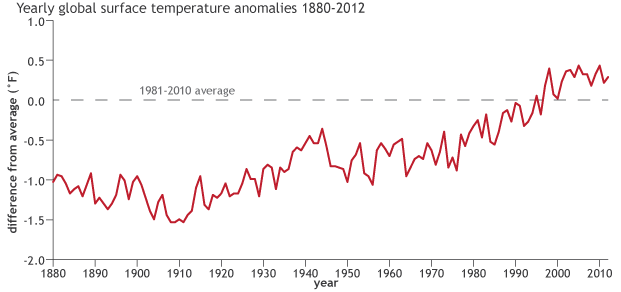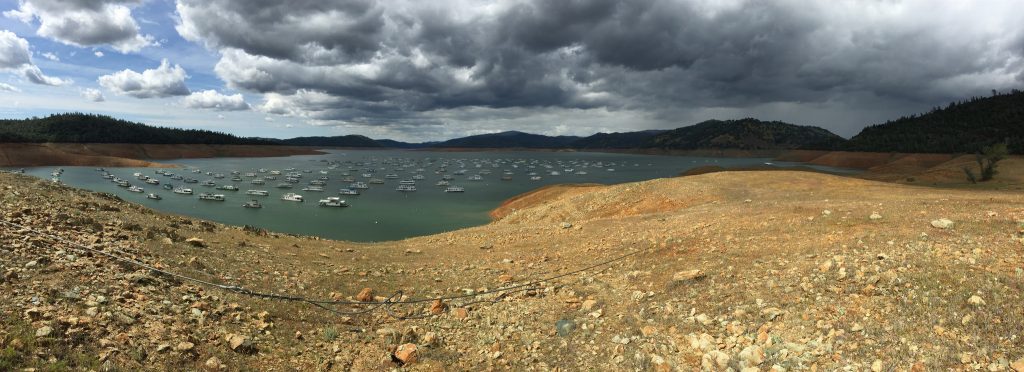Seven global warming predictions that have come true

Texas National Guard soldiers arrive in Houston on August 27, 2017 to aid residents affected by Hurricane Harvey. (Texas Army National Guard photo)
The strategy of oil industry lobbyists when it comes to climate change is to undermine trust in scientific predictions. We tend to call them “deniers,” but this doesn’t really describe the strategy accurately. The strategy is to create fear, uncertainty, and doubt.
They do this by:
- Creating their own “research” at corporate think tanks
- A false equivalence of research on both “sides” (best illustrated by John Oliver)
- Hyping fears that this will hurt jobs
- Turning it into a tribal Republican vs. Democrat issue
- Labeling predictions as “alarmism”
- And pointing out instances where predictions didn’t come true
All of this succeeds in creating fear, uncertainty, and doubt. When talking to anyone who questions climate change, we should keep in mind that the issue we’re dealing with isn’t a scientific one. It’s overcoming those aforementioned emotions.
Toward this end, let’s talk about a great New York Times article titled “Should You Trust Climate Science? Maybe the Eclipse Is a Clue” that approaches the topic from the perspective of overcoming the fear, uncertainty, and doubt.
At face value, you might think that the article’s topic is climate change. The title of the article clues us in though as to the real topic: trust.
The issue that we have in our current polarized country is one of trust. The question that the article asks is, “Should You Trust …?” While this article specifically discusses trust in climate science, the approach it takes applies to any scientific conclusion.
Where it starts is where many people are at: They don’t trust climate science conclusions.
This is not an article about the latest climate science research. This is not telling people they need to believe in science. It doesn’t call people stupid. It’s also not a scientific paper seeking to expand the boundaries of what we currently know about the topic. It asks a question some people are having and then builds an argument for why they should trust the science.
The author, Justin Gillis, starts with a topic of current interest, the eclipse, to draw interest. We know the eclipse is going to happen because we can make accurate predictions about planets and moons using science.
The point that he establishes is the ability of science to make predictions.
While climate science is a complex system and orbital mechanics is relatively simple by comparison, the basic idea that science allows us to make predictions remains the same. We trust the science of complex systems all the time:
When you let doctors inject vaccines into your children, you are responding to a prediction — based on evidence, of course — about how their bodies will react. Yet the vaccines do pose some risks, and a small proportion of children suffer side effects.
Correct predictions of climate science
Gillis then lays out a number of historical predictions that climate science has made that have been correct.
1. Temperatures will rise in response to emissions of greenhouse gases
The first prediction dates back to 1897 by a Swede named Svante Arrhenius. This establishes that this science isn’t new. It’s been around for a long time. The average global temperature has risen by more than 1 degree Celsius since the late 1800s. This doesn’t sound like much but keep in mind this is for the entire planet.
2. The average rise in temperature
In 1967, Syokuro Manage and Richard T. Wetherald produced arguably the first climate model. Their model predicted:
A doubling of the CO2 content in the atmosphere has the effect of raising the temperature of the atmosphere (whose relative humidity is fixed) by about 2 °C
While temperatures have only risen by approximately 1 °C, CO2 levels have only increased by 50% over this time period.
Manabe himself later stated:
Models have been very effective in predicting climate change, but have not been as effective in predicting its impact on ecosystem[s] and human society. The distinction between the two has not been stated clearly. For this reason, major effort should be made to monitor globally not only climate change, but also its impact on ecosystem[s] through remote sensing from satellites as well as in-situ observation.
3. As the surface of the earth warmed, the temperature in the highest reaches of the atmosphere would cool
The scientific theory behind this looks like:
Stratospheric cooling is due to the destruction of ozone by human-emitted CFC gases. Ozone absorbs solar UV radiation, which heats the surrounding air in the stratosphere. Loss of ozone means that less UV light gets absorbed, resulting in cooling of the stratosphere. Cooling of the stratosphere results in the formation of more polar stratospheric clouds, which require very cold temperatures to form. The presence of these clouds allows even more ozone destruction to occur, since the reactions responsible for ozone destruction occur much faster in clouds than in dry air.
This has also been confirmed.
4. The Arctic will warm especially fast
The Arctic as a whole is warming twice as fast as the rest of the planet.

A river of melt-water running down the slope of a toe of the Athabasca Glacier (Wing-Chi Poon/Wikimedia)
5. The oceans will rise
The rate of change we’re currently seeing is 3.4 mm/year. Since the late 1800s, it’s risen almost a foot.
6. We will see heavier rainstorms
In 1995, scientists predicted:
A warmer world is likely to experience an increase in the frequency of heavy precipitation events, associated with a more intense hydrological cycle and the increased water-holding capacity of a warmer atmosphere.
We don’t have to look far to see this. Hurricanes would still occur if the temperature hadn’t risen, but the power of them has increased as a warmer atmosphere holds more moisture.
In the Midwest, I’ve witnessed this firsthand with our thunderstorms. The National Climate Assessment published in 2014 confirmed this reporting that “large increases in heavy precipitation have occurred in the Northeast, Midwest and Great Plains, where heavy downpours have frequently led to runoff that exceeded the capacity of storm drains and levees, and caused flooding events and accelerated erosion.”
7. Heat waves will increase
As the average temperature increases, climate science also predicted the increase of heat waves and droughts. These predictions have also played out.
Coda
There’s not much more that can be added. I’m not a climate scientist, nor is the point of this to go through all of the climate science.
Nevertheless, this is a great way to help increase trust in climate change. Ask the question: Why should we trust climate science? Ask people why they trust other science, why they trust weather reports (even if with a grain of salt), why they trust medicines.
The fight we’re in with the public isn’t so much about science. It’s about overcoming the fear, uncertainty, and doubt from corporate special interests like the oil industry.
David Akadjian is the author of The Little Book of Revolution: A Distributive Strategy for Democracy (ebook now available). Cross posted at Daily Kos.













One Comment